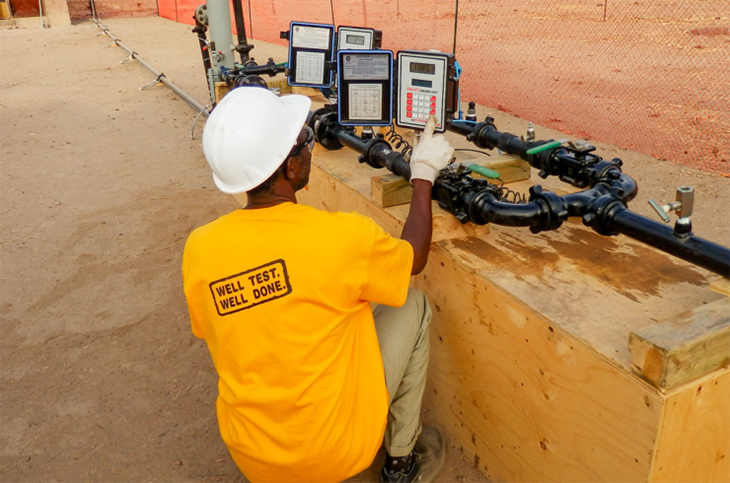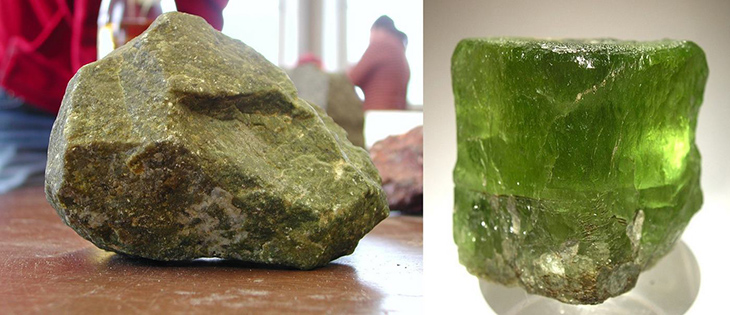
Mali happens to be the eighth biggest country in the African continent, and it’s located in West Africa. It’s home to many incredible UNESCO World Heritage sites. And just recently, there is an inflammable gas being drawn from the earth that makes tons of electricity without any CO2 emissions in the town of Bourakébougou.
This mysterious gas, which shines with a ‘sparkling ocean water blue color’ in the daytime and like ‘golden dust’ at night, was found by the Malian energy entrepreneur, Aliou Diallo, who believed that it could possibly represent a fortune.
Back in 2012, he enlisted Chapman Petroleum to help him figure out exactly what kind of gas it was. What they found out was that it was 98% hydrogen. Then some months later, Petroma – which is Diallo’s firm – installed a pilot unit to turn that same gas into electricity that produced water as its exhaust product, transforming the village into one with ‘reliable, plentiful electricity.’
In the ten years since making this discovery and turning it into electricity, scientists now believe that this could be a ‘potential inexhaustible natural energy source’ that happens to have zero emissions. As a result, they researched further by looking for more information on these underground hydrogen reservoirs.
Then in 2018, a published paper was released by a science team on the Bourakébougou hydrogen well that found evidence they got from at least twelve exploratory wells in the same area that it was “possible to confirm the presence of an extensive hydrogen field featuring at least five stacked reservoir intervals containing significant hydrogen that cover an estimated area well superior to 8 km in diameter.”
In addition, the study also found that the current estimate of its price for is way cheaper than that of manufactured hydrogen which either comes from fossil fuels or from electrolysis.
Found in the Earth’s Cratons
There was also a feature in Science Magazine that talks about the belief that hydrogen gas reservoirs were very rare. And while they are hard to find in places where energy companies usually grill for oil and natural gas, apparently when you know where to look, they are actually more common.
One of these “more common” places are actually called Earth’s cratons, which are the oldest and most stable parts of the tectonic plates. While some continents on the planet have more than one craton, others – such as the North American craton – is much bigger and covers most of the continent.
Normally oil and gas need thousands of years to form from decomposing organic matter, however hydrogen gas is something that can be constantly made underground as water interacts with iron minerals at high temperatures and pressures.

One of the iron minerals is olivine, which is made through a chemical reaction where stolen oxygen molecules from water that are dropping down from the surface of the earth transform the olivine into serpentinite, in a chemical reaction process called serpentinization, and meanwhile the water turns into hydrogen gas.
Usually, these deposits of olivine are the richest in an underground, cratonic-feature, which is called a “greenbelt.” It’s believed that because of. The high concentration of olivine found in these greenbelts, they ‘act as Earth’s hydrogen gas engine.’
Hydrogen fuel has major potential to come from fossil fuels, since it’s also the best alternative to diesel or kerosene-based vehicles and transportation types, like jet aircrafts, cargo ships, and semi-trucks.
At the moment, the wells in Mali could possibly produce hydrogen gas at 50 cents a kilo, which is one-tenth the cost of hydrogen that’s made using electrolysis with solar, wind, geothermal and other forms of green energy.
Startup company Helios Aragon, is a business whose main pursuit is finding hydrogen in the foothills of the Spanish Pyrenees. It’s CEO, Ian Munro, told Science journal that ‘his break-even costs might end up between 50 and 70 cents,’ also saying that this could possibly revolutionize energy production.
Meanwhile, For Diallo, he began a new company that he named Hydroma, and they now produce electricity using the hydrogen reservoir in their area. He is also looking into using this energy as a way to create green hydrogen via electrolysis as well.
What are your thoughts? Please comment below and share this news!
True Activist / Report a typo


